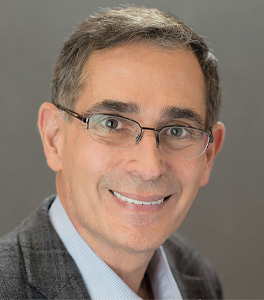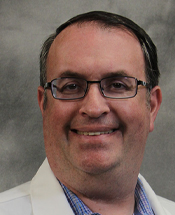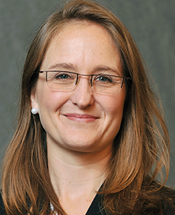 These days it is possible to get just about anything delivered, but it’s smart to be selective. The same is true of ancillary services. You can bring in a wide array of providers, practitioners, and technicians to your facility, but it’s important to choose those that you need the most and that provide the greatest benefit for your residents.
These days it is possible to get just about anything delivered, but it’s smart to be selective. The same is true of ancillary services. You can bring in a wide array of providers, practitioners, and technicians to your facility, but it’s important to choose those that you need the most and that provide the greatest benefit for your residents.
Traditionally, ancillary services involved supportive services or diagnostics that were key parts of the care a practitioner or organization provides. Today, ancillary care may mean diagnostic services, such as laboratory tests, radiology and imaging, and cardiac monitoring. Therapeutic services can include behavioral and mental health, dialysis, nutrition, physical therapy, physiatry, speech/language therapy, podiatry, occupational therapy, and optometry. Hospice and palliative care are also part of ancillary services.
Such services usually involve a contract with an outside organization or individual, and the ancillary providers come to the facility to provide these services. However, especially in rural or remote areas, some may be done via telemedicine. In general, most skilled nursing facilities need the basics, such as physical therapy, radiology, and laboratory diagnostics. Depending on the patient population, a facility may also need pain management, wound care, psychiatry, and other specialty care.
The Basics
 While ancillary services vary from facility to facility, here are some of the basics:
While ancillary services vary from facility to facility, here are some of the basics:
- Podiatry. This involves everything from toenail trimming to foot exams for diabetic patients. Like all services, these must be determined to be medically necessary.
- Hospice. Many facilities have their own hospice team, but some use outside companies to come in and provide care. These services are generally covered by Medicare. Michael Nash, MD, CMD, a Missouri-based post-acute care medical director, said, “We’re also seeing more hospice agencies with a palliative bridge program where if the patient doesn’t fully qualify for hospice, they can still get palliative care provided by an advanced practice professional.”
- Radiology. This mostly involves a mobile unit that comes onsite and provides same-day radiographs and ultrasounds. The key here is quick turnaround.
- Psychiatry. This can be challenging, particularly in rural areas. However, some services may be provided by advanced practice professionals partnering with a geriatric psychiatrist, and telemedicine technology may enable remote care. Nash said, “Almost every building I’ve been in has had a psychiatrist coming in every couple of weeks or once a month to see patients. In some parts of the country, geropsychiatrists may be in short supply.”
- Wound care. Most buildings do have wound care and may have one or more nurses who are certified in this. However, Karl Steinberg, MD, CMD, a California-based physician and medical director, said that outside wound care may be valuable to handle tasks such as sharp debridement on a frequent basis and to help manage more complex wounds.
- Speech pathologists. Steinberg said, “For patients with dysphagia, for instance, there are practitioners who will come onsite and do a swallowing test right there. This is so much better than sending them out to the hospital to have this done.” Having this ancillary service onsite, Steinberg suggested, could help a facility get more admissions or referrals for post-stroke patients, people with Parkinson’s disease, or other conditions.
- Laboratory diagnostics. This is a key service, as delays in diagnosis can put off targeted interventions that can keep patients out of the hospital or even save their lives. Leslie Eber, MD, CMD, a Colorado-based medical director, said, “Say I have a patient with high potassium levels, I can’t wait 48 hours to get lab results, so I’d have to send her to the hospital. Otherwise, the condition could be fatal.”
- Dentistry. This is less common and more of a third-tier service. The main benefits involve the ability to keep residents at home for things like dental cleanings and exams, as well as the opportunity for staff to learn some tips and techniques from dental professionals.
Eber noted that many facilities are looking at ancillary services through a post-COVID lens. For instance, they are prioritizing services that help reduce the burden on staff while producing the best possible outcomes for residents. At the same time, she suggested that ancillary services don’t necessarily have to involve medical care. For instance, some facilities may contract with outside professionals to provide services like haircuts and styling.
Particularly in large markets, there is much competition among ancillary service providers, so it’s not uncommon for facilities to switch providers if they can get better or more cost-effective service.
The Benefits
 There are some obvious benefits of having many of these services in your facility. For one, it prevents the need to send residents out to clinics and offices. In addition to the expense and inconvenience of these trips, they put residents at risk of exposure to a variety of illnesses. At the same time, ancillary services can have a positive impact on census and referrals.
There are some obvious benefits of having many of these services in your facility. For one, it prevents the need to send residents out to clinics and offices. In addition to the expense and inconvenience of these trips, they put residents at risk of exposure to a variety of illnesses. At the same time, ancillary services can have a positive impact on census and referrals.
“It makes sense to offer ancillary services like cardiology or physiatry if you are getting a number of patients coming to you with conditions that require those types of care,” said Nash. He added, “I’ve seen many facilities that want to try and improve their readmission rates, so they’ll seek help with things like pain management and cardiac issues that drive readmissions.” He further observed, “It can be a kind of a feather in their cap for a skilled nursing facility to say, for example, that they can take more heart patients, treat them in place, reduce readmissions, and have better outcomes because they have a consultative cardiopulmonary service in the building. Likewise for behavioral patients or more complex rehabilitative patients with pain management issues and various types of rehab.” Nash said that he is also seeing a growing demand for onsite palliative care and hospice to enable residents to receive those services without having to go to the hospital or a brick-and-mortar hospice.
There is a possibility, Nash noted, that having an array of valuable and well-managed ancillary services can help attract physicians and other practitioners or staff who want to know that they will have expert support in their work. These services also send a message about your commitment to quality care and can be used in marketing materials to attract new residents and appeal to families.
The Arrangement
Nash said, “I’ve seen different models, but there’s usually some sort of agreement that the company or individual will provide specific services. If the care or services will be provided by practitioners who require supervision, the details of this should be built into the agreement.” He said he also has seen situations where there is a retainer or monthly fee. However, most frequently, he observed, providers will bill individually for their services.
It is up to each facility to determine what ancillary services they will engage. However, Nash suggested, “The decision is generally made with the administrator, medical director, and other clinical leaders.” While there is no standard contract, most agreements will address issues such as:
- Who will be providing services.
- How and where the services will be provided.
- Availability of overnight calls.
- Timeframe of services.
- How patients to receive services will be identified.
- How services will be billed and at what rate.
- What (if any) support is to be provided by facility staff and what (if any) training staff will need.
- What (if any) special equipment, devices, or technology the facility will be expected to provide.
“If I’m an administrator, I’ll want to know if my staff is going to need any specific training or information to support those ancillary providers so we’re not placing an additional burden on the facility or on my team,” said Nash, adding, “You also need to know what infrastructure needs to be in place and whose devices and documentation platforms will be used.” If telemedicine services are to be used, Nash said, you need to determine what kind of consent forms will be needed.
It is important to share specific goals and priorities with ancillary service providers and possibly even give them some skin in the game. For instance, they will get a bonus if they help you reduce your readmission rates.
Telemedicine Still Going Strong
 Telemedicine is both an ancillary service and one that enables the remote provision of some other ancillaries. During the pandemic, policymakers saw value in this technology. As a result, the Centers for Medicare & Medicaid Services (CMS) implemented several permanent changes to telehealth services, including the ability for Medicare patients to receive telehealth services for behavioral/mental health services in their homes.
Telemedicine is both an ancillary service and one that enables the remote provision of some other ancillaries. During the pandemic, policymakers saw value in this technology. As a result, the Centers for Medicare & Medicaid Services (CMS) implemented several permanent changes to telehealth services, including the ability for Medicare patients to receive telehealth services for behavioral/mental health services in their homes.
In facilities, telemedicine is easier than ever to use. “It’s possible to get more accurate readings, and staff and residents alike are more comfortable with the technology,” said Dallas Nelson, MD, CMD. Nelson noted that the government is trying to decide on initial visit codes for telemedicine visits. In the meantime, this technology can potentially be used for ancillary services such as psychiatry and diabetes education.
In contemplating the use of telemedicine services, facilities need to consider the potential burden on staff. As Nelson said, “In the long term care continuum, you need some type of telepresence or a connector of some sort, and this person’s time is not reimbursable. I have personally been arguing that there needs to be some sort of recognition of the necessity of a teleprinter and some sort of compensation for the staff assisting with the telemedicine visit.”
Ancillary providers need to have a point person at the facility to contact when they have questions or concerns. “It would be wise for every facility to have a process about how they will work with ancillary providers and generally what is expected of them," said Steinberg.
The Optimal Mix of Services
Long term care providers have offered ancillary services for some time, but now with new technology, updated offerings, and different resident needs, the mix of ancillary services should be reviewed and possibly adjusted. Specialized services, telemedicine, and solid relationships with providers will enhance the person-centered care residents have come to expect.
Joanne Kaldy is a freelance writer and communications consultant based in New Orleans.